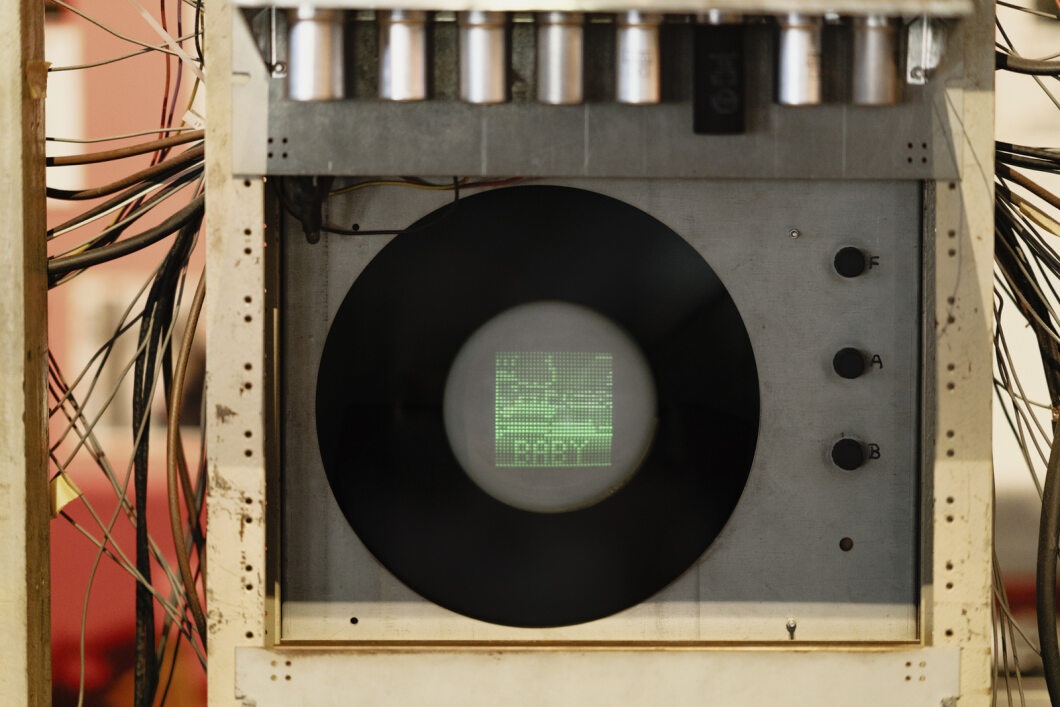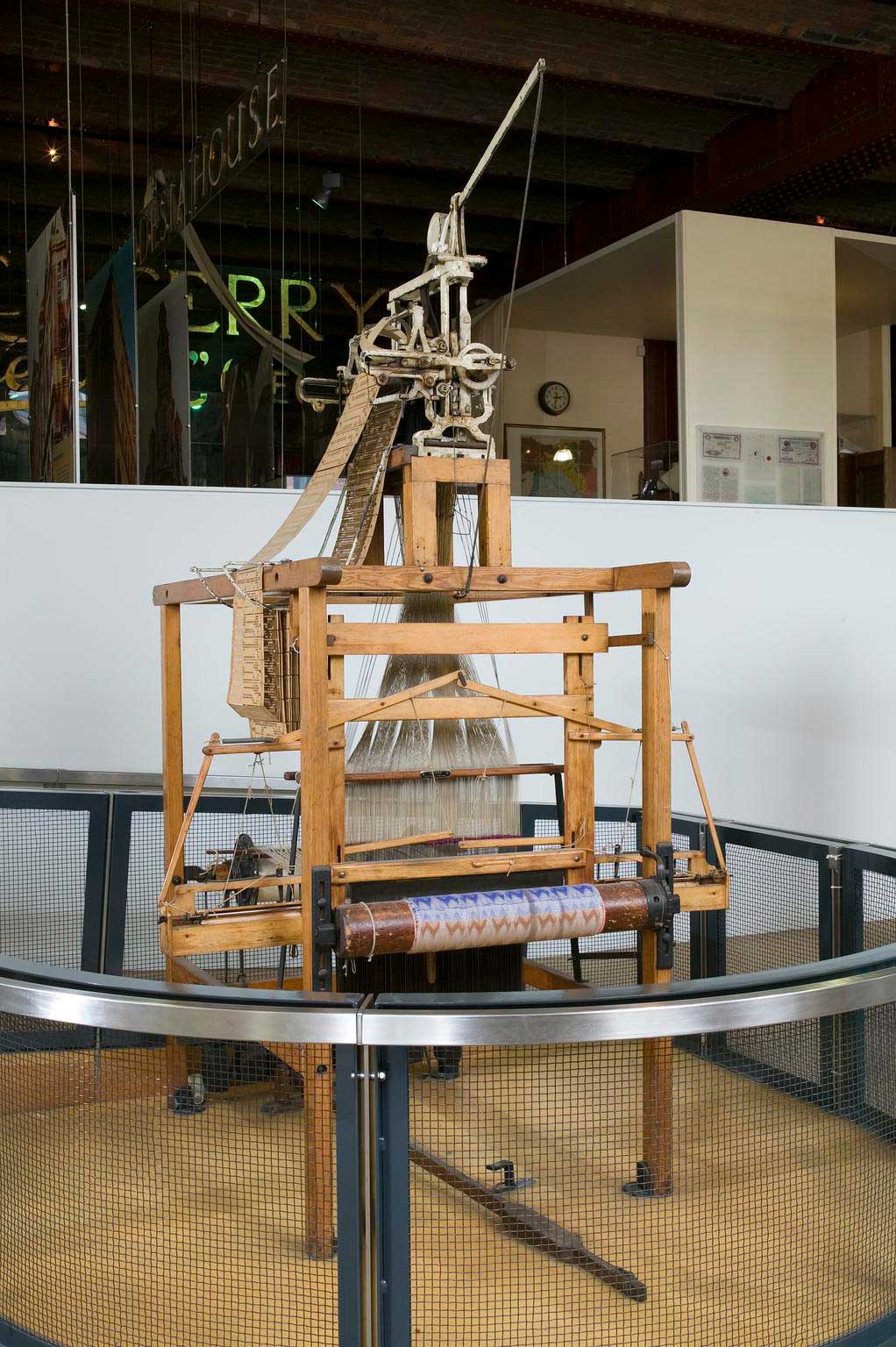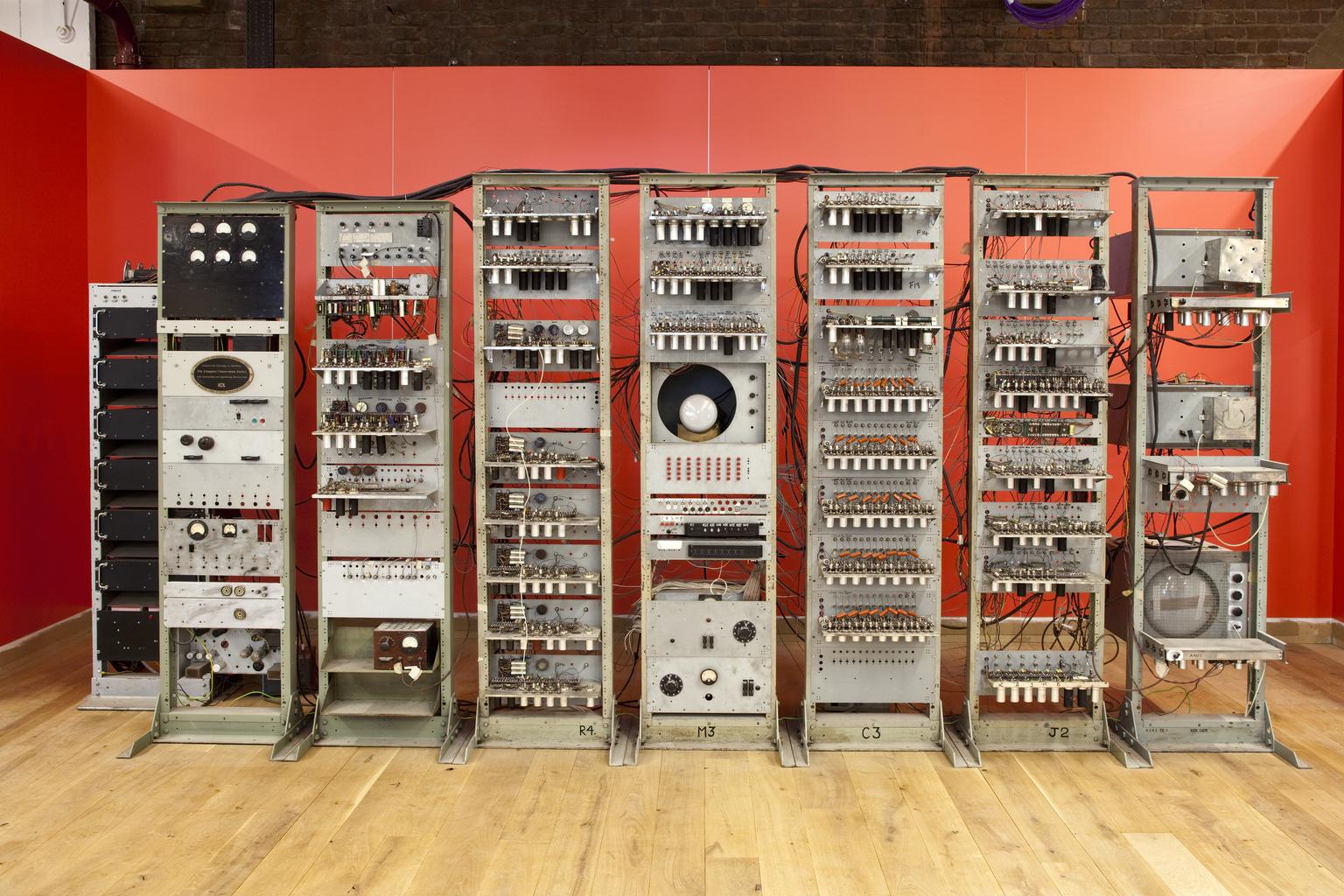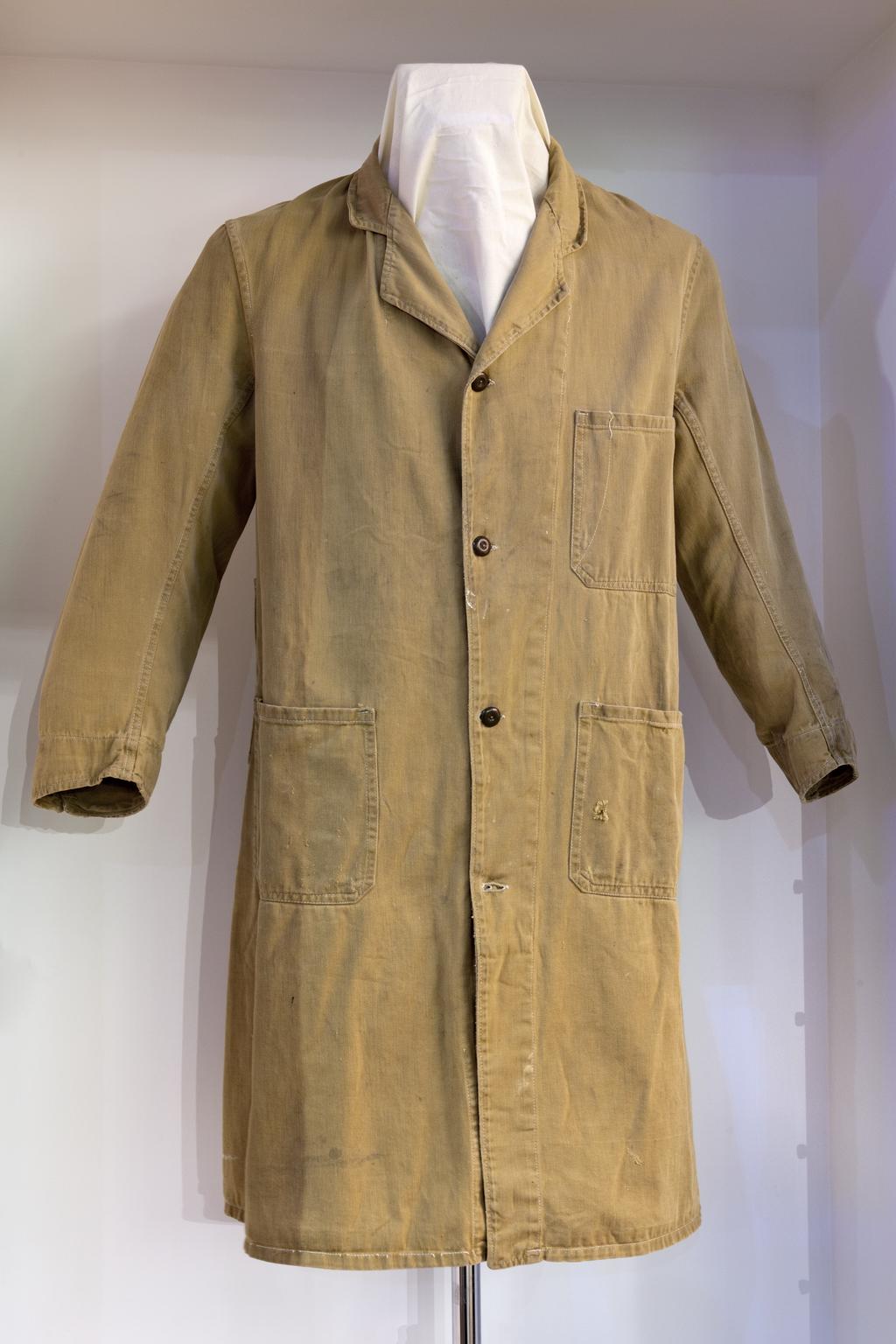
Science Museum Group © The Board of Trustees of the Science Museum
Arkwright’s Water Frame
Created by Richard Arkwright with the help of clockmaker John Kay in the 1700s, this water-powered spinning machine started a textiles revolution and transformed the way people worked. It ran day and night in Arkwright’s cotton mills. The moving rollers thinned out the cotton and the rotating spindles twisted it into yarn, meaning manufacturers could make more fabric more cheaply than ever before. Instead of spinning at home, people now worked long, repetitive and exhausting days in the mills looking after the machines.
Arkwright’s Water Frame began a revolution in mass-production. In recent times, the mass production of technology has made things like phones, laptops and tablets a far more accessible and affordable part of life for many people across the globe.

Science Museum Group © The Board of Trustees of the Science Museum
Jacquard Loom
The Jacquard loom ties together two of Manchester’s most important historic industries: textile manufacturing and computing. Cards with small, punched holes programmed the loom to weave different designs, making patterned cloth easier and cheaper to produce.
By 1900 stacks of punched cards were being used to feed data into the earliest mechanical computing machines. After the development of electronic computers in the 1940s, punched cards provided a convenient way for scientists to program these incredible ‘electronic brains’, which are the ancestors of today’s computers.

Science Museum Group © The Board of Trustees of the Science Museum
The Manchester Small-Scale Experimental Machine, ‘Baby’
In 1948, the Manchester Small-Scale Experimental Machine, nicknamed ‘Baby’, was the first electronic computer to store and run a program from memory. This computer was the first practical step to the world that we know today, as even modern computers build upon Baby’s basic principles.
The original Baby computer was built at the University of Manchester, while our life-sized replica was built in 1998, using vintage electronic components and with guidance from the original designers. The original no longer exists, having been taken apart and rebuilt into later computers, so this is the closest you can get to an important piece of computing history, which took place right here in Manchester.
Baby is a trailblazing machine that forever transformed the landscape of computing. You can see this iconic object in action at regular demonstrations run by our team of volunteers.

Science Museum Group © The Board of Trustees of the Science Museum
Alan Turing
Alan Turing was one of the earliest users of the Manchester Baby and did some of his most innovative thinking here in Manchester.
In particular, his 1950 article ‘Computing Machinery and Intelligence’ helped lay the foundations for what we now call artificial intelligence.
We are delighted to have recently added material from the campaign for Alan Turing’s pardon (following his historic gross indecency conviction under the discriminatory laws of the time) to the Science Museum Group’s permanent collection. It joins objects relating to some of Turing’s most significant achievements, including the ‘Pilot ACE’ computer and archive material and components from the Ferranti Mark 1.

Science Museum Group © The Board of Trustees of the Science Museum
Geoff Tootill’s lab-coat
You can see the coat that belonged to Geoff Tootill, one of the engineers who worked on Baby, on display in our Revolution Manchester gallery. Don’t miss the hole in the pocket caused by a hot electrical component burning through!

Science Museum Group © The Board of Trustees of the Science Museum
If you’ve been inspired by the stories behind our collections you can come and explore everything the museum has to offer, 10.00–17.00, seven days a week.
Find out more about Free Your Mind at Aviva Studios or take part in their family activities inspired by the performance.